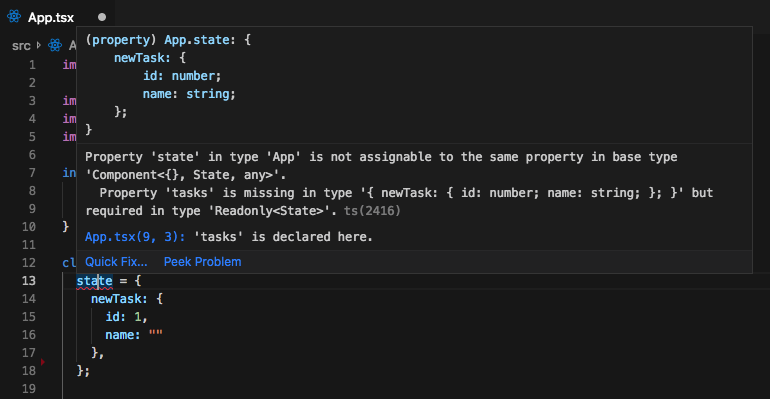
function myFunction() Īnother way to bind this is to do so in your parent component’s constructor by calling. This means, that whenever you pass a function down another function, this will not refer to the same value. Also, it is not affected by scope, like a variable would be. In JavaScript however, the value of this depends on how the function was called, not where or when it was defined. You might already have seen this in other programming language. It automatically called during the creation of an object in a class.,The best ReactJS Tutorial In 2021 ,Getting started with ReactJS,React Constructor. this is a special keyword inside each function that refers to the current context. The constructor is a method used to initialize an objects state in a class. In fact, it’s related to the way JavaScript works. Why we Need to Bind: The Basics of thisįirst of all, it’s not a React thing that you’ve got to bind this. Avoid binding by using the public class fields syntax, or bind your callbacks inside the constructor. It’s necessary because you have to tell your callback what it’s context is. TL DR: Binding callbacks is a JavaScript thing. If you ask yourself, why you even have to bind callback functions and when you actually have to do this, this article is for you: Today we’re going to learn about binding the this keyword in React components. Especially, when you’re working with callback functions. That’s because in JavaScript it is not always clear what this is actually referring to. React Constructor The method used to initialize an object’s state and which is automatically called during the creation of an object in a class is known as a constructor in ReactJS. Handling the this keyword is causing a lot of headaches for many developers.

#React constructor how to#
Today you’ll learn why you need to bind, and how to bind a callback function in React. It’s probably because you forgot to bind a callback function before passing it down a prop. In the above example, we used a constructor to bind event handler changevalue.This might sound familiar to you: You run your React app after you made some changes to test your new functionality and get an error message like this: “ tState’ is not a function“. Used to bind event handler in class component

In the above code, state methodName is intialized with value ‘ Constructor‘. Without super(props) initialization, ‘ this‘ can’t be accessed within the constructor and super(props) is used to import parent component methods and variables in the current component.

Super(props) must be initialized in the constructor first. Used to bind event handler in class component.The main purpose of using a constructor is, Remember: state is a plain JavaScript object. Getting Set Up With a React Project Today there are many frameworks which support TypeScript out of the box: Create React App - TS docs Next.js - TS docs Gatsby - TS Docs All of these are great starting points. Initializing state is done by setting this.state to an object, like you can see above. TypeScript supports JSX and can correctly model the patterns used in React codebases like useState. That's some kind of mental shift that you need to do moving from class-based component. The Constructor According to the official documentation, the constructor is the right place to initialize state. it is the first method invoked in the class component. But there are way to lazily initiate the state ( /docs/hooks-reference.htmllazy-initial-state ) and other tricks can be apply to improve performance.

The Constructor is a method used to initialize state objects in react class component. Constructor is an important method in a react lifecycle, Let’s discuss all the details about constructor in this post. Technically the constructor is the first function called upon instantiating any class in JS, not just React Components.


 0 kommentar(er)
0 kommentar(er)
